Philanthropic Support for HIV/AIDS in 2018 – 10 Key Take Aways
Funders Concerned About AIDS recently hosted a webinar to talk about key data included in its latest resource tracking report: Philanthropic Support for HIV/AIDS in 2018 . If you missed the webinar, a recording is available here. In the meantime, here are 10 Key Take Aways we think you should know:
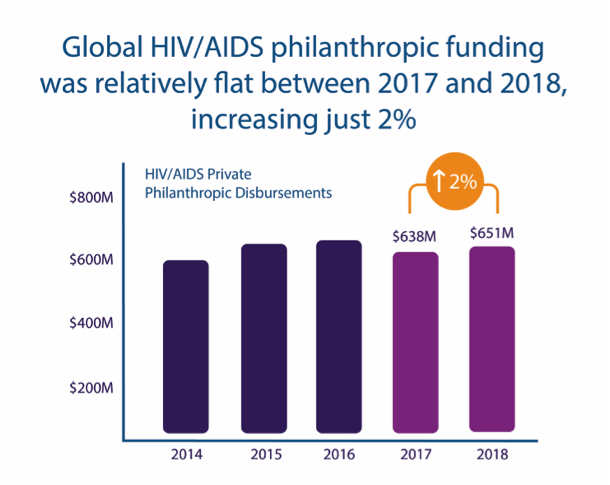
- Need is outpacing funding. This year’s resource tracking report shows that HIV/AIDS philanthropic disbursements in 2018 remained relatively flat, with only an incremental 2% increase. This is especially problematic at a time when increased resources from private philanthropy—and funding for advocacy especially—is critical to combat flattening public resources and harmful public policy.
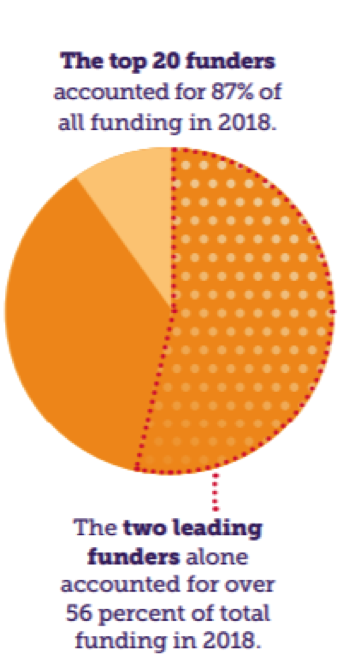
- There remains a concentration at the top. 20 HIV/AIDS funders—out of a total of 693 analyzed in the report—accounted for 87% of the year’s total; 56% of funding came from the top two funders alone. In addition, over the course of six years, roughly 30 of the once leading funders have left or significantly decreased their investments in HIV, taking approximately $130 million in resources with them.
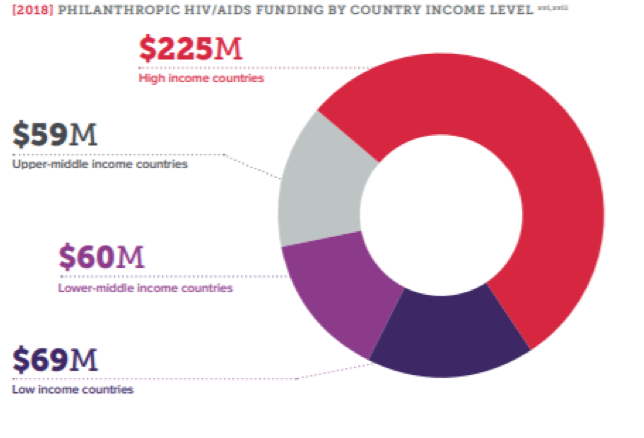
- Beware of the fragility of the current environment. Middle-income countries saw an 11% increase in country-specific HIV-related philanthropy from 2017. Many of these same countries are transitioning away from bilateral and multilateral donor funding. This creates a precarious environment and is something FCAA will be watching closely.
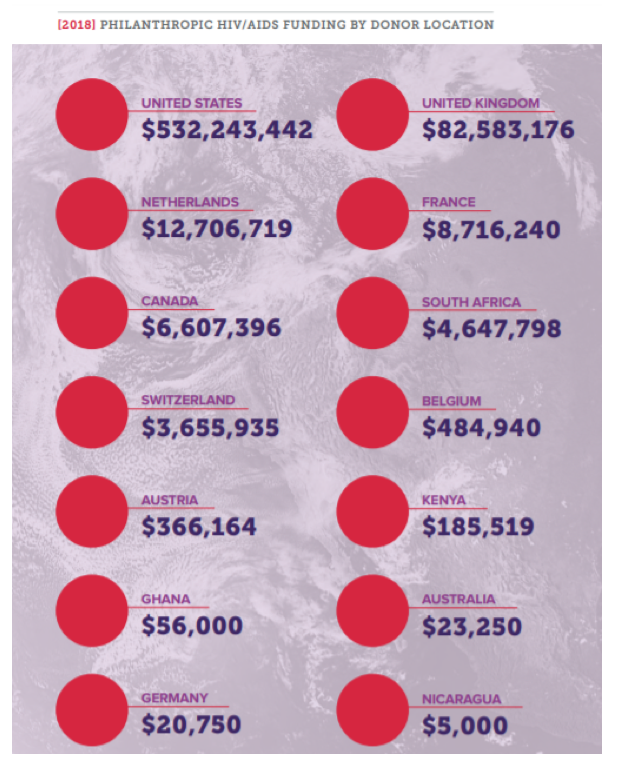
- The majority of funding comes from the U.S. While 14 countries contributed resources to HIV/AIDS, the bulk of philanthropic funding originates in the U.S.
- Over a third (34%) of all philanthropic funding in 2018 came from corporate funders. 36% of all corporate funding went to continuing medical education courses or to organizations that assist patients to obtain medication co-payments. Of the 30 philanthropic corporate HIV funders, 20% are pharmaceutical companies, yet they represent 86% of corporate funding, and 29% of HIV-related funding overall.
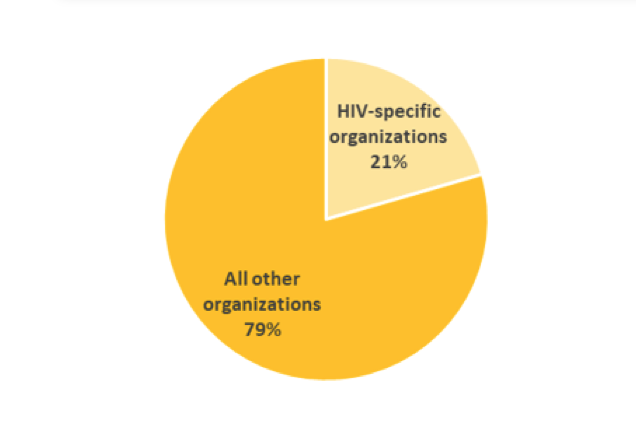
- Not all resources come from those who consider themselves “HIV funders.” 79% of HIV philanthropy in 2018 came from funders who have a broad funding lens/portfolio – those without an HIV-specific mandate.
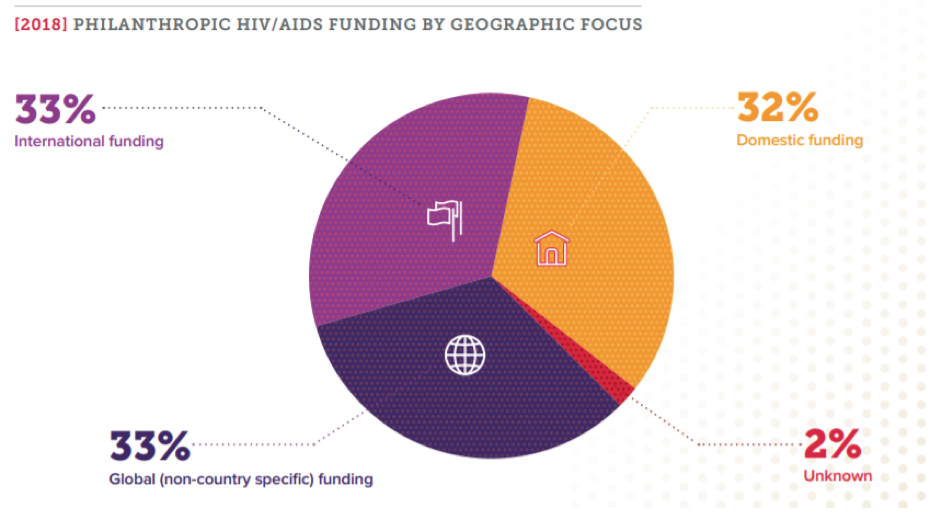
- International and domestic funding are becoming more even. Historically, most philanthropic funding has been directed globally (grants that are of a worldwide reach or target population). But in the past two years, there has been a slight decrease in global funding. Roughly a third of resources are now allocated globally, a third domestically (directed to or benefiting projects within a funding organization’s own country or region) and a third is international (directed to or benefiting projects in specific countries or regions outside of a funding organization’s own country or region).
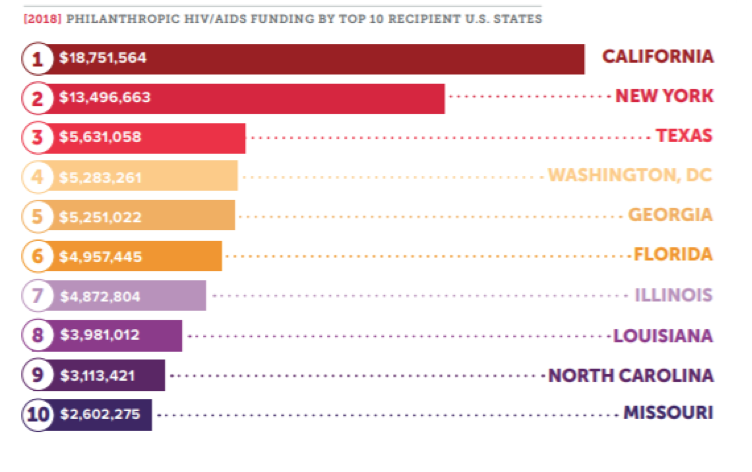
- HIV funding for the U.S. reached a new high of $200 million. California and New York are at the top of the list of state recipients. It’s notable that seven of the top 10 states are located in the U.S. South, where there is a heavy burden of the epidemic. Over 50% of the U.S. funding was non-state/non-region specific.
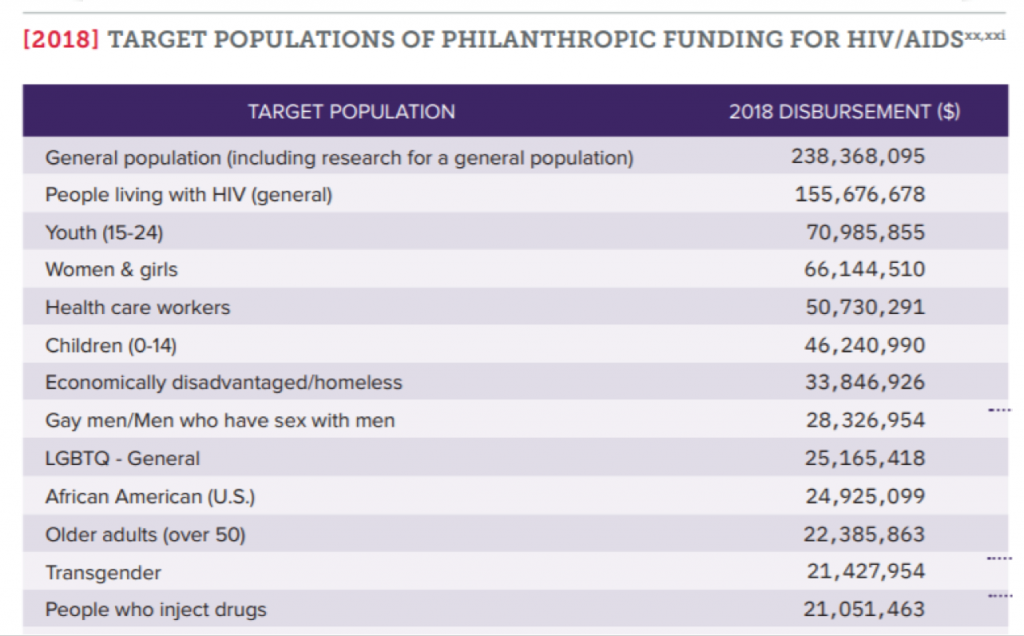
- Some target populations are receiving increased attention. Older adults (over 50) saw a 627% increase with funding going from $3 million to $22 million.
- Funding the right strategies is paramount. For example:
General operating funding is critical to an organization’s ability to survive during challenging times – supporting its staff and prioritizing the needs of the communities it serves. To better understand how funders are addressing these needs, FCAA began tracking general operating costs as a separate category in 2018.
There is far more detail available. Be sure to watch the webinar recording here. The full report is available here.
